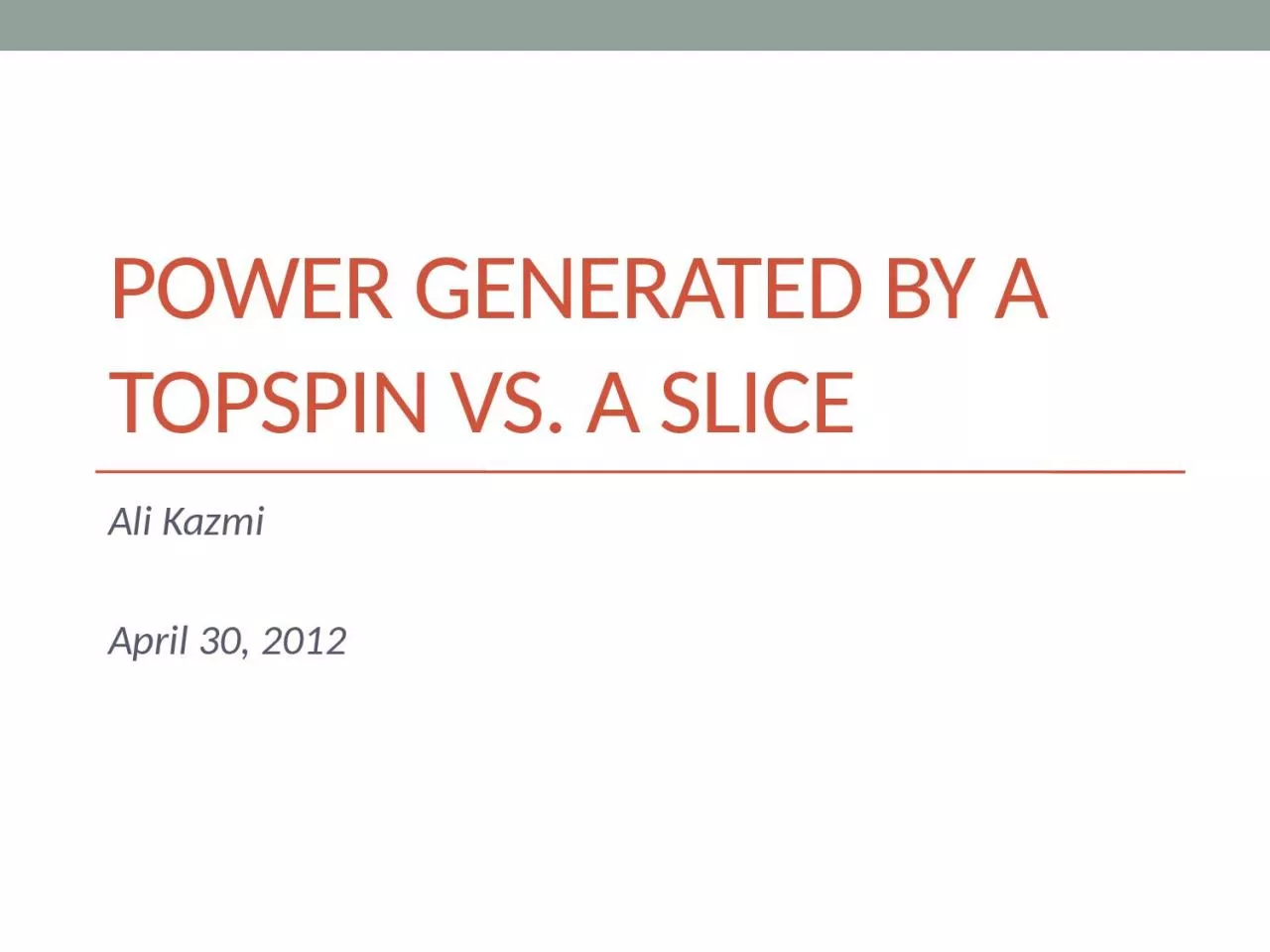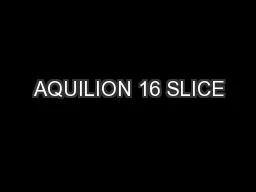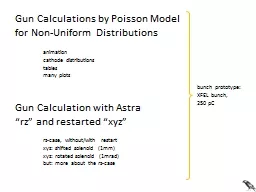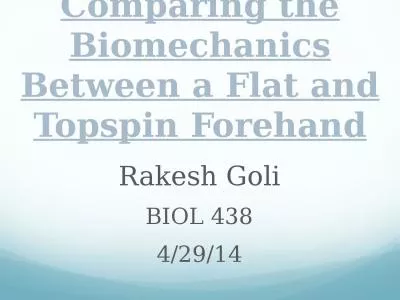PPT-Power generated by a topspin vs. a slice
Author : paisley | Published Date : 2024-01-13
Ali Kazmi April 30 2012 Every human motion is driven by the synergistic action of the basic biomechanical unit The basic biomechanical unit consists of a pair
Presentation Embed Code
Download Presentation
Download Presentation The PPT/PDF document "Power generated by a topspin vs. a slice" is the property of its rightful owner. Permission is granted to download and print the materials on this website for personal, non-commercial use only, and to display it on your personal computer provided you do not modify the materials and that you retain all copyright notices contained in the materials. By downloading content from our website, you accept the terms of this agreement.
Power generated by a topspin vs. a slice: Transcript
Download Rules Of Document
"Power generated by a topspin vs. a slice"The content belongs to its owner. You may download and print it for personal use, without modification, and keep all copyright notices. By downloading, you agree to these terms.
Related Documents














